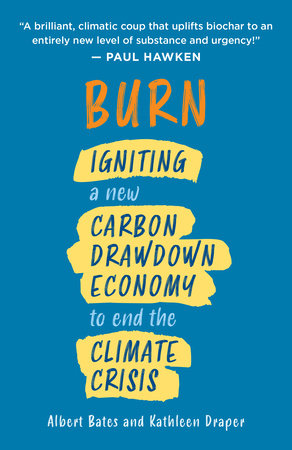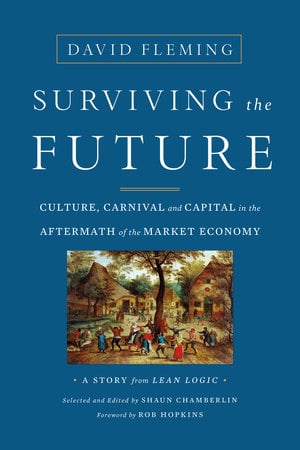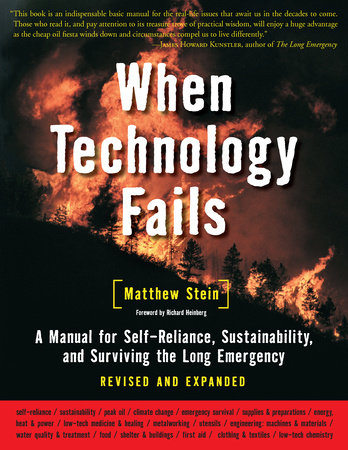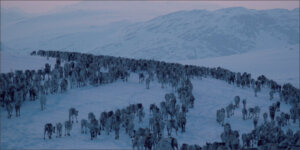The Evolution of Earth, Humans, and Our Natural Resources
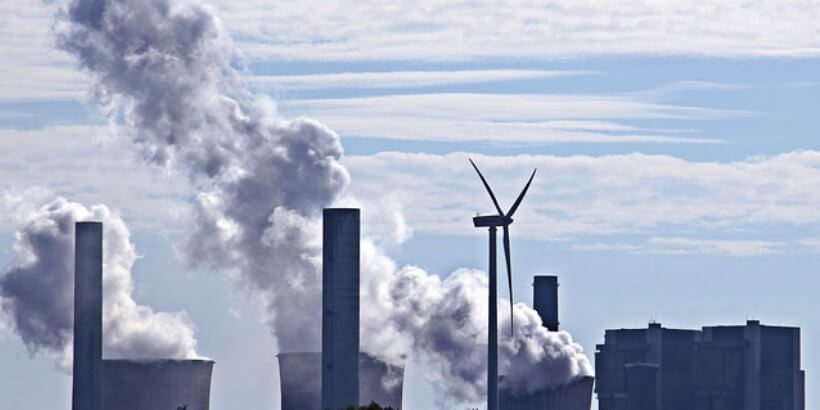
We have long been taught that evolution is a process that occurs gradually over millions of years, that change happens slowly without much attention. We’ve come to learn that in reality, evolution happens in fits and starts — very slowly for long periods, then in sudden spurts of rapid change. It may be triggered by one particular event or perhaps a series of events, but regardless, in a very short time afterward, new life-forms emerge, ecotones form, and long-established orders realign. Evolutionary biologist Stephen J. Gould called this process “punctuated equilibrium.” We are now entering the next punctuation in Earth’s evolution and unless we start making drastic changes, things are going to look a bit different once the dust settles.
The following is an excerpt from Burn by Albert Bates & Kathleen Draper. It has been adapted for the web.
History, sociology, and anthropology show us that cultural evolution proceeds in much the same way. Civilizations are living entities with regular cycles of birth, growth, and death. They may evolve and grow for as little as a century or two, as the Inca empire did, or over the course of thousands of years, as with India and China. When a civilization begins, it is a child. It tries new things and adopts behaviors it admires. As it matures, its social norms become more rigid, embedded, and brittle. It may lose some of its ability to respond to change or adapt in new ways. Each generation is taught to accept “the way things are” without questioning. This phase often ends in corruption, decay, and decline.
Many of us can sense the next punctuation coming. Perhaps it has already begun. The starting point for the current phase might have been three centuries ago. At that moment humans had only just discovered how to harness coal to make steam but had yet to employ the far greater energy density of oil and gas, never mind nuclear fission. The mere addition of coal to the human energy portfolio could well have been enough to augur the end of the global civilization we know today. Civilization itself, in the words of ecologist Tim Garrett, has become a heat engine.
Coal from the Fushun mine in northeastern China was used to smelt copper as early as 1000 BCE but it was the advent of James Watt’s steam engine in the eighteenth century that gave fossil energy traction, literally. In perfect parallel, expansion of the human population tracked expansion of the supply of available energy, railroads, and factories. Thomas Malthus, running the mathematical equations for population, and the Swedish Nobel Prize winner Svante Arrhenius, doing the same for climate change roughly a century later, accurately predicted the outcome once humanity was swept up in the enchantment of seemingly unlimited energy.
As we progressed in our ability to harness energy, we moved from a nearly stable world population, fluctuating little over the course of thousands of years, to a steady growth rate of 30 percent every twenty years. In 1925, we’d added one billion more people to the planet and 20 parts per million (ppm) of carbon dioxide (CO2) to the atmosphere over the previous seventy-five years (from 1850). We now add one billion people to the planet and 25 to 30 ppm of CO2 to the atmosphere every twelve years.
Historian William Catton labeled modern humans Homo colossus — those among us living in industrial countries and consuming massive amounts of fossil fuels to motivate and control machines that do orders of magnitude more work than humans or animals could do alone. Rolling along like a quiet juggernaut, Homo colossus is replacing Homo sapiens across the face of the Earth. While Homo sapiens, with a stable population under one billion, might have had a reasonable chance of being around for another two or three million years, Homo colossus hasn’t a prayer.
A reckoning awaits. When, exactly, that reckoning might occur is difficult to predict. It could occur suddenly, as the deceptive debt instruments engineered to cover the real life-support deficit can no longer be serviced. It could occur slowly, as we continue squeezing out the last tons of brown coal, barrels of tarry shale oil, and cubic meters of unconventional gas, using ever-advancing technologies to find, refine, and burn them as quickly as possible, ignoring the horrific climate consequences we are locking in.
Evolutionary biologist Bruce H. Lipton says there are three questions that form the base paradigm of civilizations. If the old answers are wrong, or become wrong over time, new answers are required. Civilizations that stay nimble enough to adopt the new answers begin a new chapter of life. Those that don’t, disappear. The three questions are: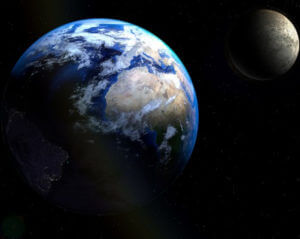
1. How did we get here?
2. Why are we here?
3. How can we make the best of it?
The answer to the first question is a wild story no matter how you approach it. You could say we are here because billions of years ago astronomical collisions occurred as objects moving out from the Big Bang ricocheted like billiard balls and in an extraordinary chance occurrence one of those collisions produced an elliptical orbit in the third planet from a star, an orbiting moon just the right distance from that planet to pull tides, a spin that secured climate gradients between the poles and equator, an eccentric tilt of the axis that permitted annual seasons and the ebb and flow of photosynthesis. In these extraordinarily auspicious circumstances of birth we were also given the rarest gift: the presence of surface water, arriving like the rupture of the amniotic sac at the start of labor.
The collision that struck off Earth’s moon enveloped the young Earth in a hot metallic vapor: 230°C (446°F). Over the course of a few thousand years, that vapor condensed, perspiring water, and leaving behind a sweltering CO2 atmosphere. Liquid oceans formed despite the temperature because of the pressure of the heavy atmosphere. Gradually, subduction by plate tectonics and absorption by ocean water removed most CO2 from the atmosphere, cooling the world and yielding saline oceans and a benign atmosphere of oxygen, hydrogen, and nitrogen — and the perfect conditions for life to arise.
Or this all may just be a dream that Vishnu is having.
Why we are here is anyone’s guess. Perhaps it was so that biological organisms could set foot on other planets, by fugitive bacteria hitching a ride with the Mars rover Curiosity. Or perhaps we are nature’s way of generating another mass extinction event in order to clear the stage for the next evolutionary drama.
If a civilization answers the third question in a way that ignores the energy and resource flows and storages of the planet — “get more stuff,” “watch out for number one,” or “this world doesn’t matter, it is the next we want to get into” — destruction will be our destiny. If, on the other hand, a civilization says, “maintain harmony,” “don’t anger the gods,” or “live lightly and plan for the future,” restoration and continuation can be our happy outcome.
According to the International Biochar Initiative, “biochar can be distinguished from charcoal—used mainly as a fuel—in that a primary application is use as a soil amendment with the intention to improve soil functions and to reduce emissions from biomass that would otherwise naturally degrade to greenhouse gases.”
Indeed, when people discuss biochar, they often focus almost exclusively on agricultural uses. This is admittedly the focus of The Biochar Solution (published by Albert in 2010) and Terra Preta (published by Kathleen with Ute Scheub, Haiko Pieplow, and Hans-Peter Schmidt in 2016). Drawing on the published science at those times, our best estimate for biochar’s potential drawdown effect worldwide—the amount of carbon that could be removed from the atmosphere and oceans—was about 1 gigaton of carbon per year (GtC/yr). Current annual anthropogenic emissions are more than 9.5 GtC/yr.4 After adjusting for the difference between carbon and carbon dioxide—1 ton of carbon equals 3.67 tons of carbon dioxide—that’s 35–40 gigatons of carbon dioxide and its equivalents in other greenhouse gases (CO2-e) every year. The shortfall is rather glaring. That sequestration potential suggested in 2010 is only 10 percent of the annual human carbon footprint. Carbon farming in all its permutations, as necessary and useful as it is, is unlikely to be sufficient to reverse climate change on its own.
There is good news, however. Really good news. Evidence is rapidly mounting that the potential of harnessing carbon to reverse climate change extends far beyond agriculture. That potential is what this book is all about. We seek to share the growing number of ways that carbon can be used above the ground to improve health, rebuild infrastructure, provide or boost renewable-energy production, rebalance atmosphere and ocean equilibrium, and offer a host of other benefits. Practitioners from around the world are demonstrating that carbonizing biomass can help urban and rural areas become more sustainable and regenerative by reducing waste, restoring ecosystems, closing nutrient cycles, and slashing emissions.
Recommended Reads
Recent Articles
You know of Dasher, Dancer, Prancer & Vixen. Comet, Cupid, Donner & Blitzen. Rudolph too! But have you heard of the Sámi people who herd reindeer in Norway?
Read MoreWintergreen is the stunning evergreen groundcover that’s a game-changer for your garden! It’s cherished for its aromatic leaves, vibrant fall color & bright berries.
Read MoreThe fig tree is more than just a fruit-bearing wonder. The complex nature of these trees is beyond fascinating. They are the ultimate ecosystem superheroes!
Read MoreThe dirty truth? Soil isn’t just dirt! It’s a complex web of life. Discover the secrets to unlocking its full potential and transform your garden forever.
Read More

